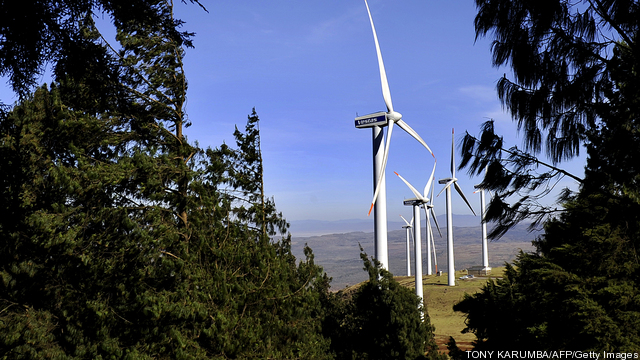Good science should spark debate. It’s the nature of the field, after all. You ask questions, search for data and then debate what it means or what actions the data should spur. Such a debate is underway now, and it is adding fuel to an old fire.
In May 2014, Dr. Charles R. Frank of the Brookings Institution published a working paper comparing the net benefits of replacing coal and gas plants with five no- and low-carbon fuels – solar, wind, hydropower, nuclear, and combined cycle natural gas. Avoided carbon emissions and low energy and capacity costs are deemed benefits, whereas higher emissions, energy and capacity costs, and unique fuel-specific deficiencies (i.e. toxic waste from nuclear power, intermittency of wind, solar, and hydro, etc.) comprise costs.
In late July, The Economist promoted several of this working paper’s primary findings, namely that wind and solar are expensive fuel sources with relatively sparse net benefits – compared to nuclear, combined cycle gas, and hydropower – when replacing coal plants.
Many refute the validity of this conclusion, and response from the scientific community was swift.
Notably, Amory Lovins of Rocky Mountain Institute authored a rebuttal, which claims Brookings’ conclusions are based on outdated data. Lovins said that even if you applied Frank’s imperfect methodology, but instead used accurate data, wind and solar would have been the most economical options. According to Greentech Media’s article summarizing Lovins’ arguments,
[The Brookings working paper] assumed solar and wind to be more expensive and less productive than they actually are, and conversely assumed nuclear and gas combined-cycle to be less expensive and (for gas) more productive than they actually are. All the knobs turned in the wrong directions. Using Dr. Frank’s methodology – flawed as it is – but swapping in accurate numbers for the nine key data points mentioned in the previous paragraph reverses his conclusions. Wind and solar become the most economical options while gas and nuclear become the least.”
While the debate on the validity of Brookings’ conclusions is an important one, our concerns focus on the working paper’s methodology and its potential applications.
How Dr. Frank identifies and integrates emissions and cost considerations when assessing the net benefits of replacing conventional coal and gas power plants with no-carbon or low-carbon plants for an isolated year is logical, creative, and overall a positive contribution to strong science on this subject.
EDF’s concern, however, is that policy advocates misinterpret this working paper’s implications. While this document contributes to understanding the current state of affairs, it is not forward looking and voices few policy recommendations – none of which are granular. It also discounts the rapidly changing energy landscape and the long-term nature of energy planning. As Wayne Gretzky might say, we’re not trying to skate to where the puck is, but where it is going to be.
When determining policies pertaining to emissions reductions – for the electricity or any other sector – the scope needs to be long term because climate change is a long-term issue. Time, money, and scale are prerequisites for the development of technologies that are critical for inevitably weaning the world off fossil fuels. Thus, in the larger context, whether or not the annual net benefits for 2014 of replacing one megawatt (MW) of base load coal production with one MW of solar or wind energy are negative ignores the importance of investing today for an optimized power generation mix in 2030, 2040, and 2050.
A passage particularly ripe for misinterpretation by coal and fossil fuel proponents is Brookings’ short-sighted critique of the EPA’s Clean Power Plan, as follows:
A new coal plant with 38.8 percent efficiency that replaces an old coal plant with 32.5 percent efficiency generates more avoided emissions per MW per year than a solar plant, and more net benefits than either solar or wind when the carbon dioxide price is $50. The new proposed EPA regulations would exclude this option from the electricity mix.”
This assessment may be correct for 2014, but coal plants have an average lifespan of 40-60 years. What’s more important is the new coal plant’s carbon emissions relative to solar over the coal plant’s entire lifespan, accounting for vast improvements in solar technology that are sure to transpire over that period and the contribution additional solar scale today will make toward accelerating this improvement rate.
Clearly, Dr. Frank is not advocating for new coal plants as a long-term solution that is preferable to renewables. Instead, as summarized by The Economist, this report’s take-home message is that “governments should target emissions reductions from any source rather than focus on boosting certain kinds of renewables.”
EDF agrees that it is crucial to target emissions reductions “from any source,” but we also know that progress happens over time and decisions that will last for 50 years or more should be made with the future – rather than the past – in mind. Supporting renewables in the short-term is a fruitful investment for people, business and the climate, and robust paths forward for reducing electricity sector emissions should be based on forward-looking analyses.
By Peter Sopher
Originally Published on August 28, 2014
The Energy Exchange Blog is a forum where EDF‘s energy experts discuss how to accelerate the transition to a clean, low-carbon energy economy. Follow them on Twitter here: @EDFEnergyEX


